Overview
This article examines the multifaceted applications of LC-MS/MS analysis within the life sciences, underscoring its critical importance across diverse fields such as:
- Drug development
- Clinical diagnostics
- Environmental monitoring
- Food safety
- Biopharmaceuticals
- Forensic science
- Metabolomics
- Proteomics
Each application illustrates how LC-MS/MS significantly enhances precision, efficiency, and safety in analytical processes. Furthermore, advancements in technology, particularly the integration of AI, are propelling its relevance and effectiveness in tackling complex biological challenges. The implications of these developments are profound, as they not only streamline analytical workflows but also contribute to more reliable outcomes in various scientific endeavors.
Introduction
The role of LC-MS/MS analysis in life sciences is increasingly pivotal, empowering researchers and clinicians to unlock the complexities of biological systems with unparalleled precision. This advanced analytical technique is transforming various fields—from drug development and clinical diagnostics to environmental monitoring and food safety—offering insights that were previously unattainable. However, as the landscape of life sciences evolves, a critical challenge emerges: how can organizations effectively harness these advancements to optimize workflows and enhance outcomes? This article explores ten key applications of LC-MS/MS analysis, highlighting its significance and the innovations driving its future in the life sciences sector.
Slickbit: Custom AI Solutions for Optimizing LC-MS/MS Workflows
Slickbit.ai stands at the forefront of delivering tailored AI solutions that significantly enhance workflows for Life Sciences organizations through lc-ms/ms analysis. By seamlessly incorporating AI agents into existing systems, companies can markedly improve data evaluation, streamline operations, and ensure compliance with regulatory standards. This strategic integration not only accelerates the drug development process but also enhances the precision of analytical results, empowering teams to focus on innovation and productivity.
For instance, AI can optimize essential tasks such as data validation and reporting, thereby enabling scientists to dedicate their efforts to critical evaluation and informed decision-making. The rapid MVP development capabilities offered by Slickbit guarantee that these AI solutions can be deployed swiftly, providing immediate advantages to organizations within the Life Sciences sector. As Chris Lock, Ph.D., from SCIEX, emphasizes, the role of software in scientific success is paramount, particularly as AI continues to revolutionize lc-ms/ms analysis in pharmaceutical development.
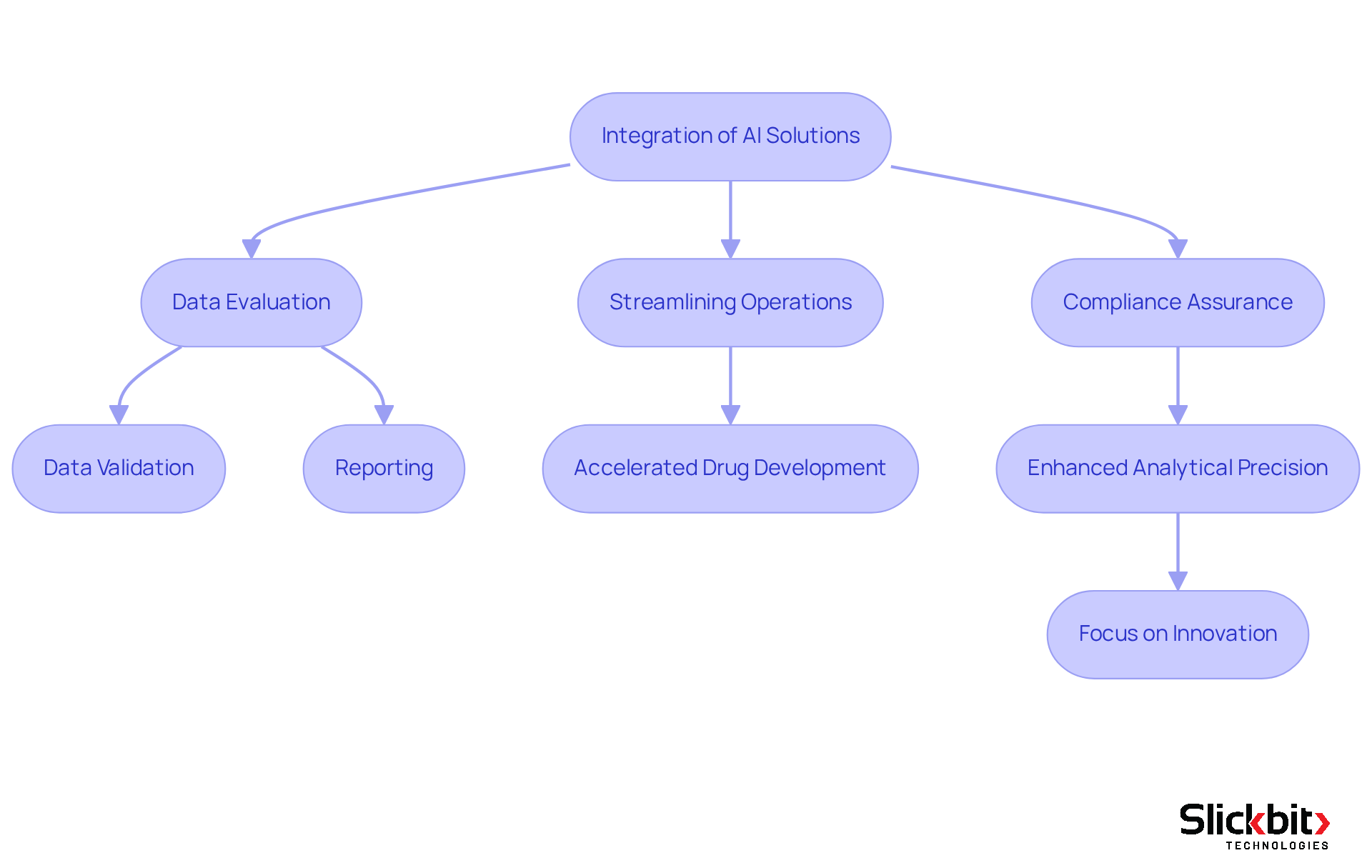
Drug Development: Utilizing LC-MS/MS for Pharmacokinetic Studies
Mass spectrometry functions as an essential analytical instrument in pharmacokinetic research, enabling accurate assessment of compound levels in biological samples over time. This technique is renowned for its high sensitivity and specificity, allowing researchers to evaluate a drug's behavior within the body with precision. By analyzing plasma, urine, or tissue samples, scientists derive crucial pharmacokinetic parameters, including half-life, peak plasma concentration, and bioavailability.
Recent studies have effectively utilized mass spectrometry to assess the pharmacokinetics of innovative therapeutics, yielding vital data that informs dosing regimens and safety evaluations. For instance, the pharmacokinetic profile of tomivosertib was thoroughly examined using mass spectrometry, revealing moderate clearance and an elimination half-life of 88 minutes following intravenous administration. These findings are essential for assessing its therapeutic potential, pivotal for regulatory submissions, and ensuring new drugs are both effective and safe for patient use.
Current trends in pharmacokinetics research increasingly leverage lc-ms/ms analysis techniques, with advancements in artificial intelligence and machine learning enhancing data analysis and interpretation. This integration improves the capacity to handle intricate datasets, further reinforcing its role in contemporary pharmacokinetic studies. As researchers continue to explore the complexities of medication metabolism and interactions, the significance of mass spectrometry in delivering dependable and practical information remains paramount.
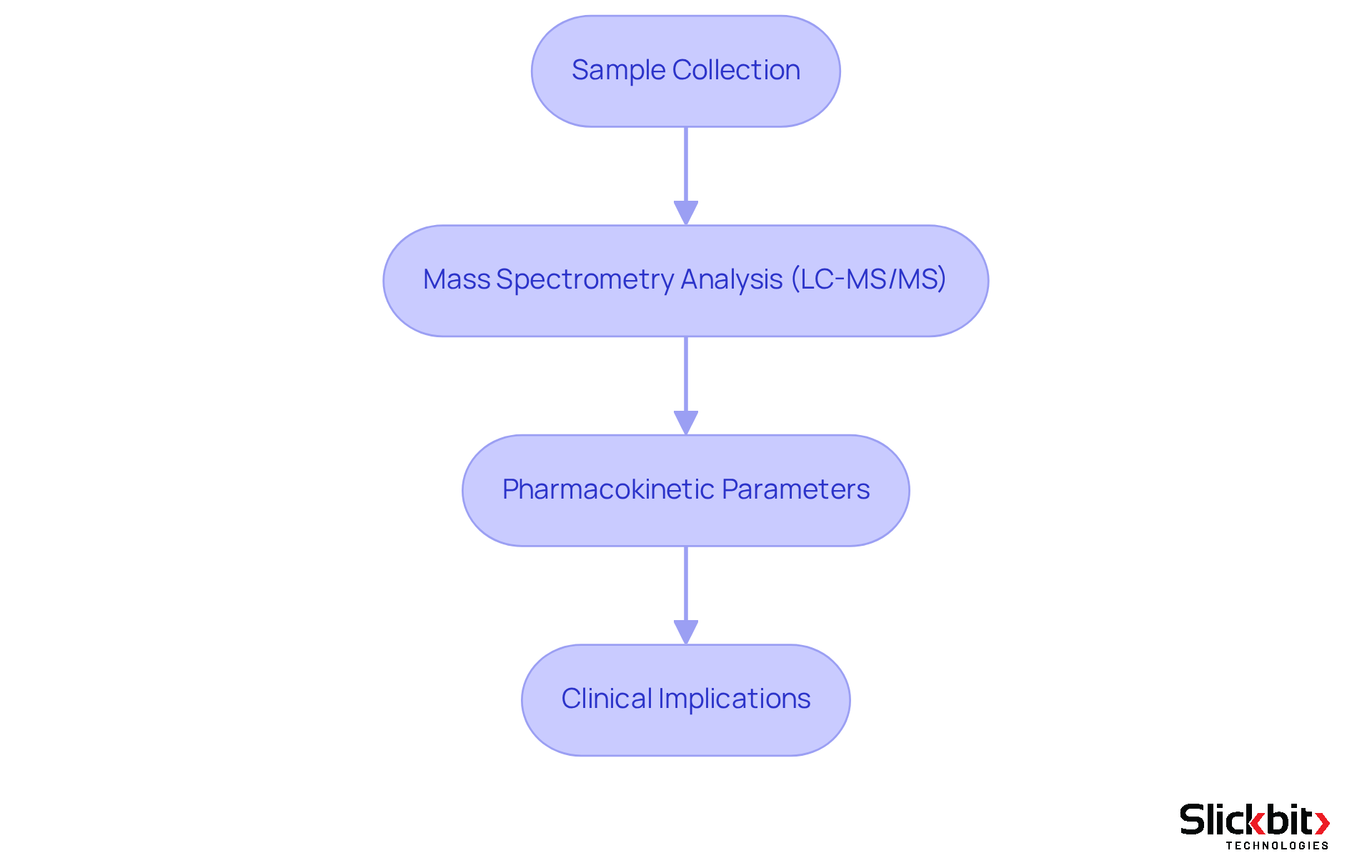
Clinical Diagnostics: Enhancing Accuracy with LC-MS/MS Analysis
In clinical diagnostics, LC-MS/MS analysis is gaining recognition for its precision and reliability across a spectrum of tests. This advanced technique excels in measuring biomarkers, hormones, and drugs in biological fluids, empowering healthcare providers to make well-informed decisions regarding patient care.
For instance, LC-MS/MS is essential in identifying and measuring steroid hormones, which are crucial for diagnosing endocrine disorders. Its high sensitivity enables the detection of low-abundance analytes, vital for early diagnosis and timely treatment. Furthermore, the capability to analyze multiple compounds simultaneously streamlines laboratory workflows, significantly enhancing efficiency and ultimately leading to improved patient outcomes.
Recent advancements in mass spectrometry technology have further solidified its role in clinical laboratories, with many facilities transitioning from traditional chromatography methods such as gas chromatography (GC) and high-performance liquid chromatography (HPLC). As noted by Mariëtte Theodora Ackermans, "conventional detection systems with HPLC methods sometimes lack the desired specificity." This limitation underscores the advantages of LC-MS/MS analysis, which offers a robust and economical solution. Consequently, the swift integration of LC-MS/MS analysis in endocrine laboratories highlights its increasing importance, as numerous present applications are 'home-made' and necessitate careful implementation to guarantee reliability in diagnostic practices.
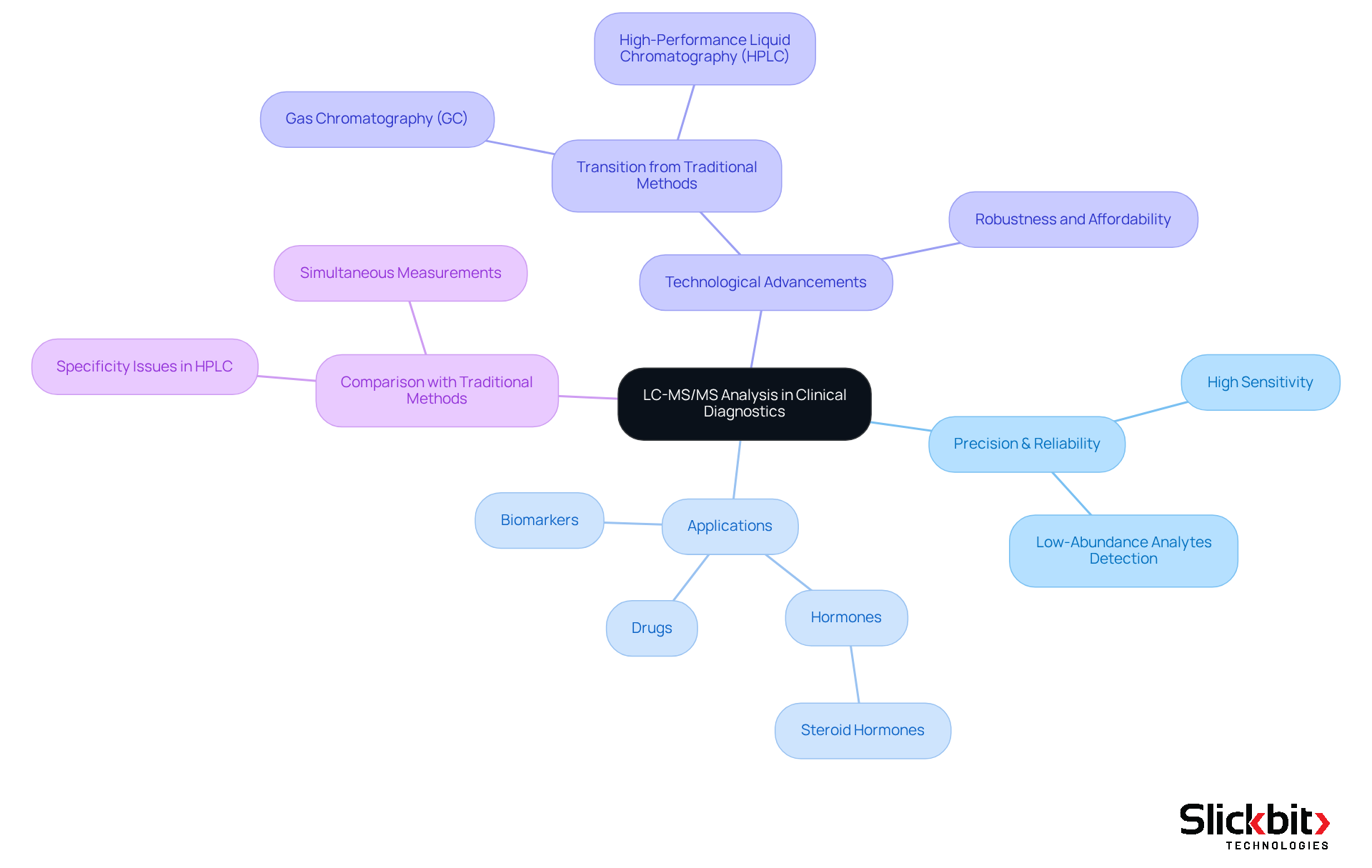
Environmental Monitoring: Assessing Contaminants with LC-MS/MS
The technique plays a crucial role in environmental monitoring by facilitating the detection and quantification of contaminants across various matrices, including water, soil, and air. This method is particularly effective for analyzing persistent organic pollutants (POPs), heavy metals, and emerging contaminants such as pharmaceuticals and personal care products.
Regulatory agencies, for instance, employ lc-ms/ms analysis to monitor water quality and assess the presence of harmful substances in drinking water supplies. Recent studies reveal that over half of the water samples tested in Hungary contained detectable pesticide levels, with approximately 5% exceeding EU maximum concentration levels. This underscores the importance of mass spectrometry in safeguarding public health by adhering to stringent safety standards and guiding necessary remediation efforts.
Moreover, the advanced throughput capabilities of lc-ms/ms analysis enable comprehensive environmental evaluations, making it an indispensable resource for environmental researchers. Current trends emphasize the integration of sophisticated analytical techniques, such as high-resolution mass spectrometry, which enhances the capacity of lc-ms/ms analysis to identify trace amounts of pollutants. As highlighted by experts, the ability to identify and quantify emerging contaminants is vital for developing effective regulatory frameworks and ensuring the safety of water resources.
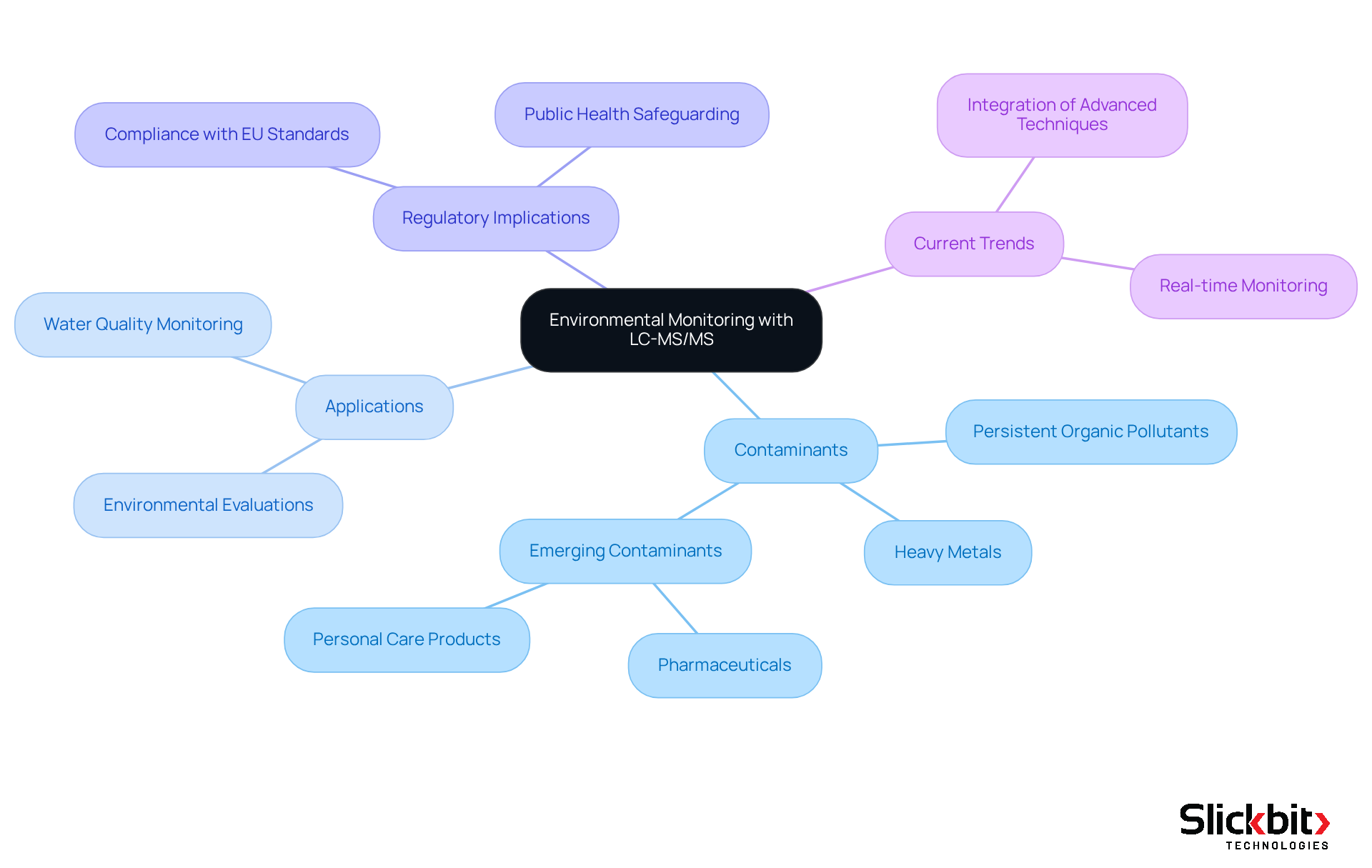
Food Safety: Detecting Additives and Contaminants Using LC-MS/MS
In the realm of food safety, lc-ms/ms analysis serves as an indispensable tool for identifying and quantifying additives, contaminants, and pesticide residues in food products. This sophisticated technique, lc-ms/ms analysis, is vital for ensuring that food items comply with safety standards and do not present health risks to consumers. For example, mass spectrometry techniques are widely employed to analyze pesticide residues in fruits and vegetables, thereby confirming adherence to regulatory limits. Notably, in 2017, 29 pesticide residues were identified in 85 apple samples examined in Poland, with 71% of those samples showing traces of at least one pesticide. This underscores the prevalence of pesticide residues and the critical role of advanced techniques in safeguarding food safety.
Recent studies have demonstrated that lc-ms/ms analysis can effectively detect multiple pesticide residues in a single assessment, significantly enhancing the efficiency of food testing laboratories. A multi-residue method was established to identify 41 pesticide residues in rice, achieving high recovery rates (71-119%) and precision (RSDs <20%). This reinforces the necessity for stringent testing protocols in maintaining food safety. Furthermore, the lc-ms/ms analysis technique in mass spectrometry is also capable of identifying foodborne pathogens and toxins, providing essential data for comprehensive food safety evaluations. The ability to conduct multi-residue examinations in a single run not only streamlines laboratory processes but also bolsters the overall safety of food supply chains, ensuring that consumers receive products devoid of harmful contaminants.
Additionally, the Quick, Cheap, Effective, Rugged, and Safe (QuEChERS) method is frequently employed alongside mass spectrometry to isolate trace contaminants in food samples, further enhancing the reliability of the evaluations.
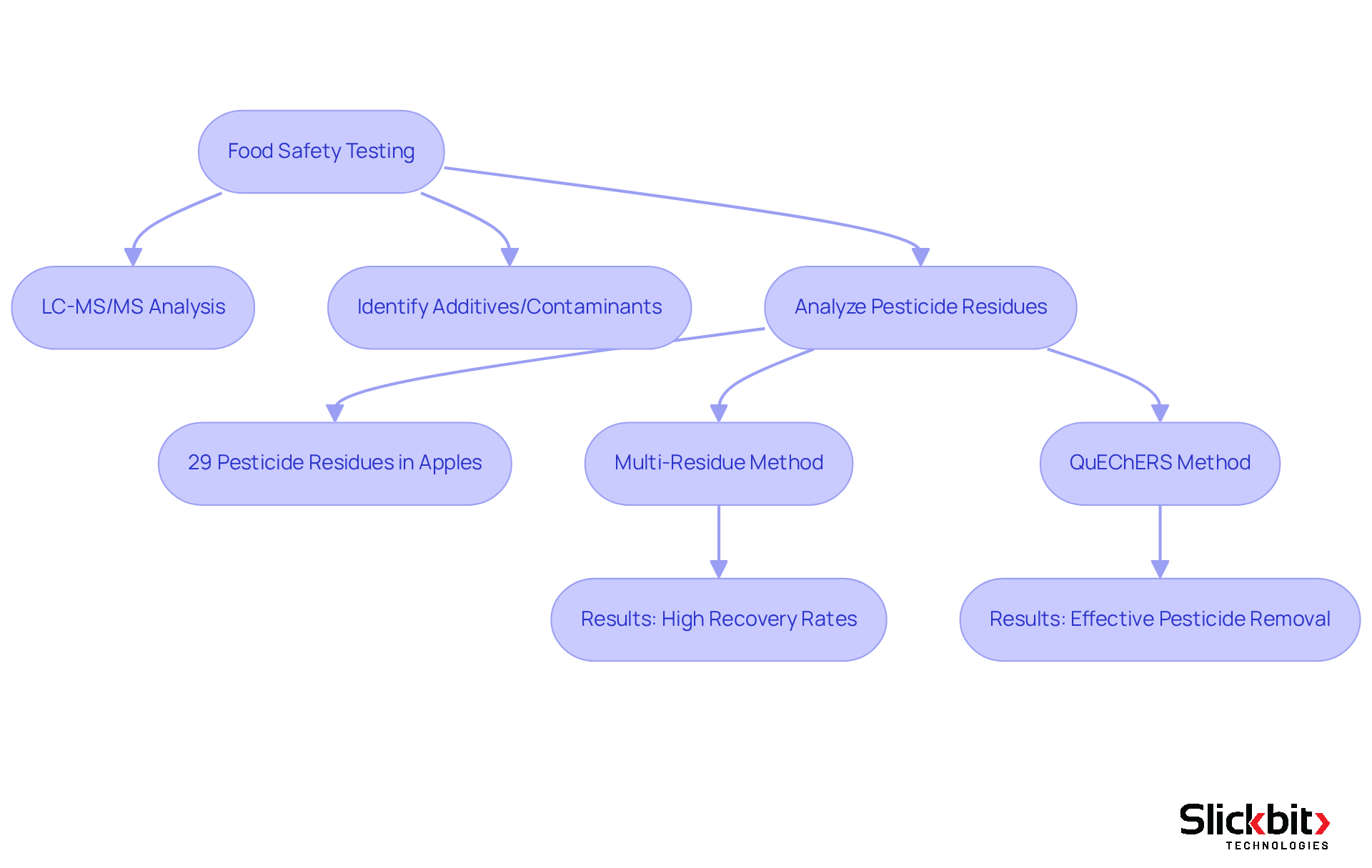
Biopharmaceuticals: Analyzing Biological Samples with LC-MS/MS
Mass spectrometry stands as a pivotal technology in the analysis of biopharmaceuticals, facilitating the quantification of therapeutic proteins, antibodies, and other biologics within intricate biological matrices. This technique is celebrated for its sensitivity and specificity, which are essential for effectively monitoring drug levels throughout clinical trials and post-marketing studies.
Recent advancements in mass spectrometry techniques have markedly improved the quantification of therapeutic proteins. For example, the implementation of stable isotope-labeled (SIL) peptides has significantly enhanced the precision in measuring monoclonal antibodies, achieving coefficients of variation below 20%. Such accuracy is vital for comprehending pharmacokinetics, providing detailed insights into the absorption, distribution, metabolism, and excretion of these biologics, thus optimizing dosing regimens and safeguarding patient safety.
Moreover, the system's ability to analyze multiple analytes simultaneously streamlines the biopharmaceutical development process. This multiplexing capability not only boosts efficiency but also facilitates comprehensive assessments of therapeutic proteins, which is crucial in the rapidly evolving realm of biopharmaceutical research. As the industry increasingly embraces these advanced analytical methods, the significance of mass spectrometry in ensuring the quality and efficacy of therapeutic agents becomes ever more critical.
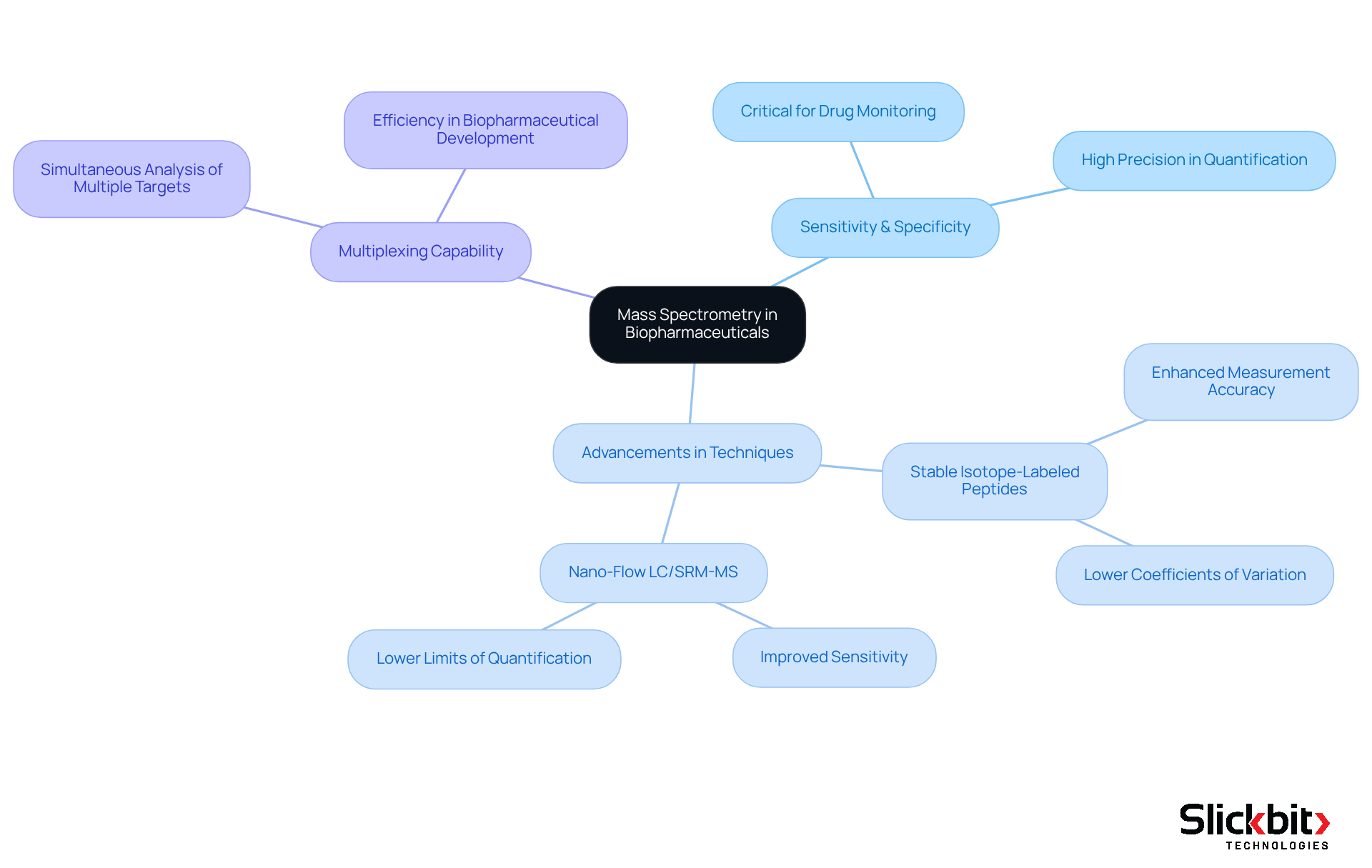
Forensic Science: Implementing LC-MS/MS in Toxicology and Drug Testing
In forensic science, the LC-MS/MS analysis has become a cornerstone for toxicology and substance testing, providing accurate and reliable results that are essential for legal inquiries. This sophisticated method excels in identifying and quantifying substances and their metabolites across various biological samples, including blood, urine, and hair. As Franz Eduard Dussy aptly noted, 'LC-MS/MS analysis is becoming increasingly important in forensic toxicology and related fields.'
For instance, in cases of suspected substance overdoses, LC-MS/MS analysis proves invaluable, allowing forensic toxicologists to accurately identify the substances involved and determine their concentrations. The method's high sensitivity is particularly noteworthy, allowing for the detection of low-abundance substances that are often critical for comprehensive toxicological evaluations. Furthermore, the capacity to analyze multiple compounds in a single run significantly streamlines workflows in forensic laboratories, thereby enhancing operational efficiency. Recent studies have underscored the effectiveness of LC-MS/MS analysis in accurately recognizing substances during overdose situations, thereby reinforcing its pivotal role in safeguarding public health and supporting law enforcement initiatives.
Significantly, LC-MS/MS analysis can identify a total of 163 substances, which includes 120 new psychoactive substances (NPS) and 43 additional compounds, showcasing its extensive capabilities. Moreover, the alarming statistic of a sevenfold increase in drivers killed in vehicle accidents while impaired by substances further underscores the public health implications of testing and the critical importance of precise detection methods.
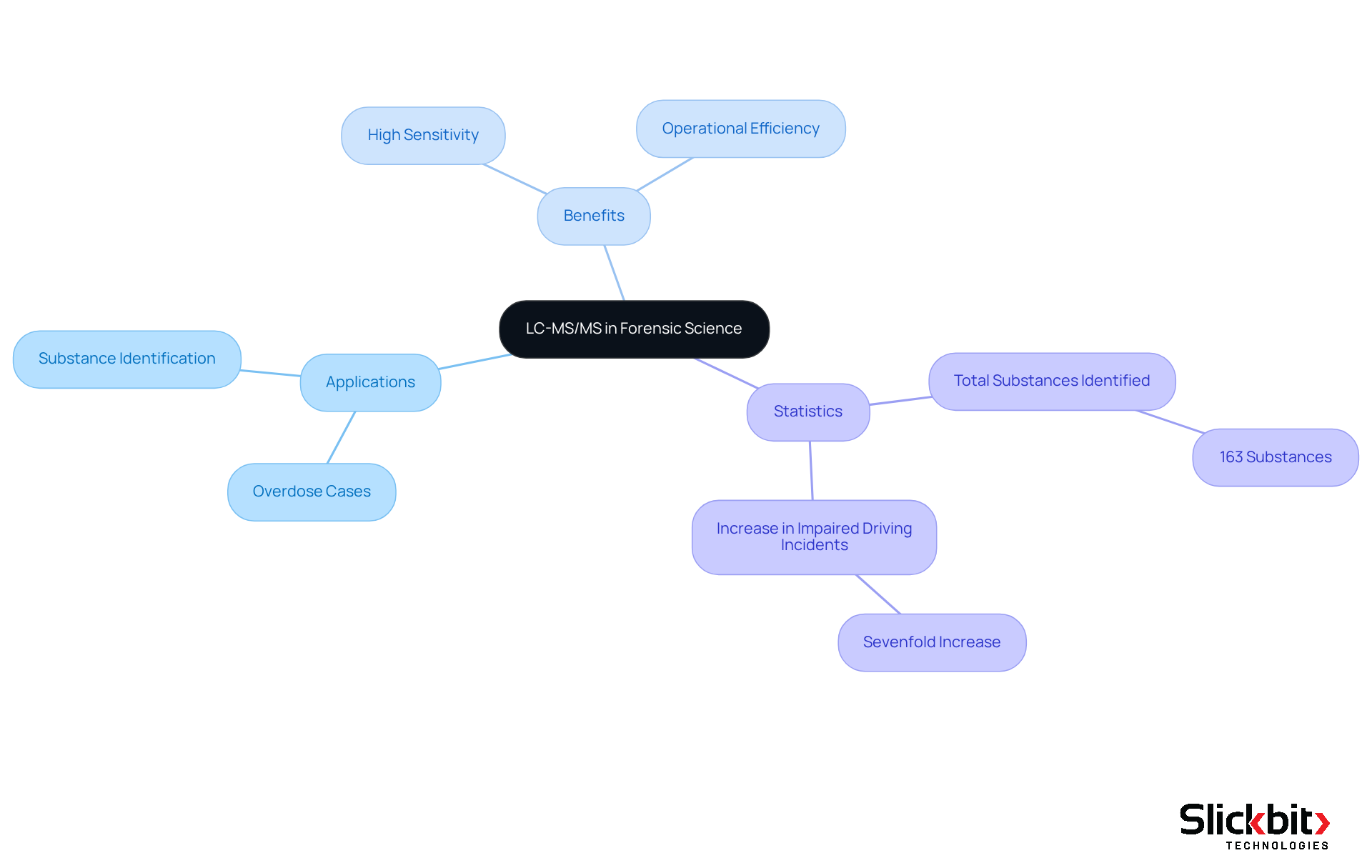
Metabolomics: Exploring Metabolic Pathways with LC-MS/MS
Mass spectrometry stands as a powerful tool in metabolomics, facilitating the comprehensive analysis of metabolites within biological samples. This technique empowers researchers to delve into metabolic pathways and comprehend the biochemical changes that arise in response to various stimuli, including disease or drug treatment. However, it is crucial to recognize the challenges inherent in metabolomics, such as the non-repeatability of biomarkers and variability across different lc-ms/ms analysis platforms, to provide a balanced perspective on its applications.
For instance, mass spectrometry has been instrumental in profiling metabolites in cancer research, yielding insights into tumor metabolism and potential biomarkers for early detection. A notable study identified a panel of 11 plasma lipids that function as diagnostic markers for malignant brain gliomas, underscoring the technique's promise in early detection and personalized treatment strategies. In a similar vein, research on pancreatic ductal adenocarcinoma unveiled 17 lipid markers that could significantly enhance diagnostic accuracy.
The capability of mass spectrometry, especially with lc-ms/ms analysis, to analyze a diverse array of metabolites simultaneously significantly enriches metabolic research, paving the way for advancements in precision medicine. Its extensive metabolite coverage and high sensitivity render it an invaluable asset in this field. By integrating findings from metabolic pathway analyses with other omics data, researchers can gain a deeper understanding of the complex interactions within biological systems, ultimately leading to improved prognostic and therapeutic outcomes. Furthermore, large-scale validations across diverse populations are essential to confirm the diagnostic abilities of biomarkers, highlighting the importance of rigorous study designs in metabolomic research.
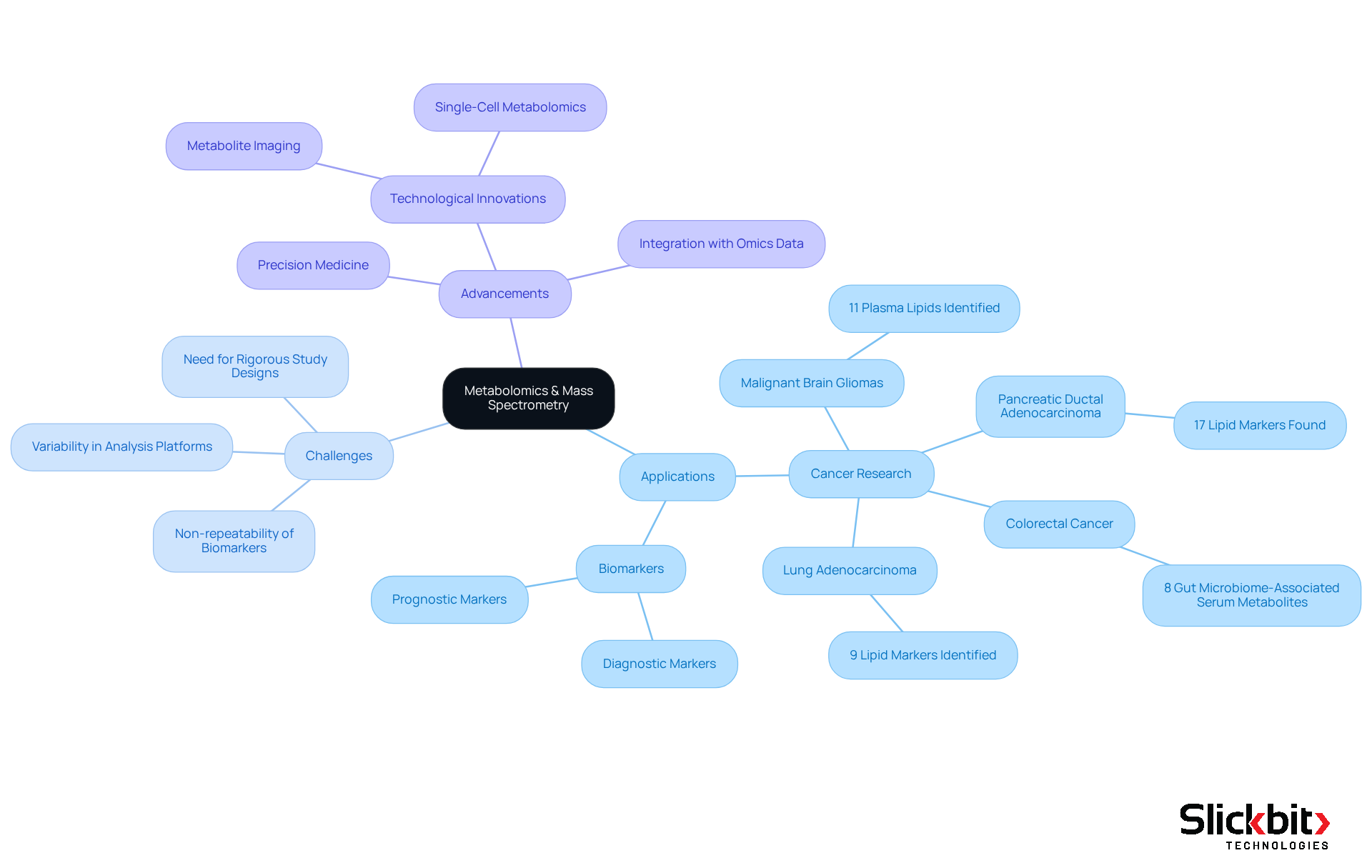
Proteomics: Analyzing Proteins with LC-MS/MS Technology
In proteomics, lc-ms/ms analysis is a cornerstone for identifying and quantifying proteins within complex biological samples. This advanced technique empowers researchers to explore protein expression levels, post-translational modifications, and intricate protein interactions, yielding critical insights into cellular functions and the underlying mechanisms of diseases.
For instance, lc-ms/ms analysis has been pivotal in investigating the proteomes of various cancer types, uncovering potential therapeutic targets and biomarkers essential for personalized medicine. Its high sensitivity and resolution facilitate the identification of low-abundance proteins, which is crucial for comprehensive proteomic evaluations. Furthermore, the capability for high-throughput analyses significantly enhances the efficiency of proteomic studies, accelerating progress in drug discovery and development.
Recent trends indicate an increasing reliance on lc-ms/ms analysis for comprehensive protein profiling, especially in clinical settings where swift and precise biomarker identification is vital. Experts in the field assert that the integration of advanced mass spectrometry into routine laboratory workflows not only enhances diagnostic capabilities but also bolsters the ongoing quest for novel therapeutic strategies. As the landscape of proteomics continues to evolve, the role of mass spectrometry in elucidating protein interactions and their implications in disease mechanisms remains indispensable.
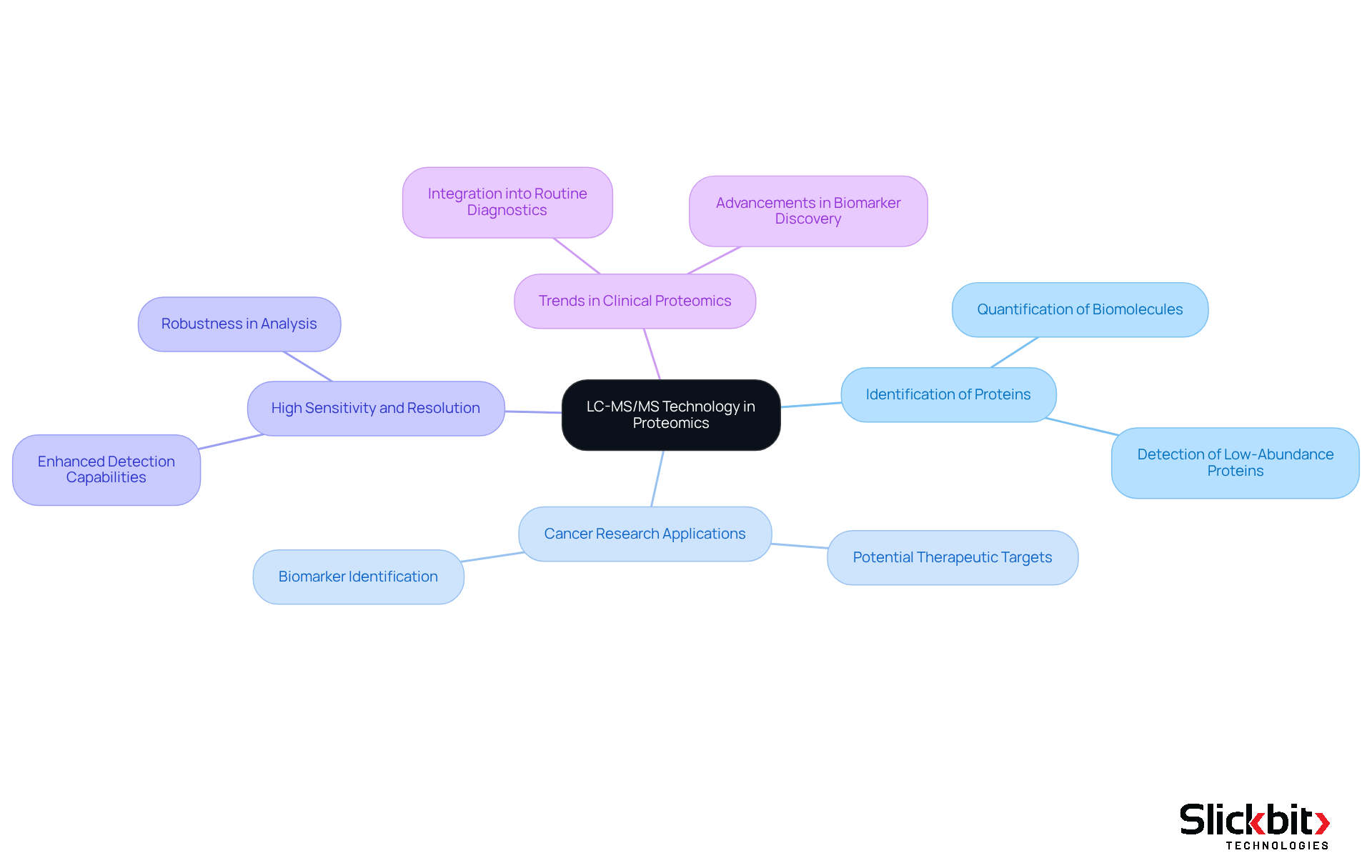
Innovations in LC-MS/MS: Driving Future Applications in Life Sciences
Recent advancements in lc-ms/ms analysis technology are revolutionizing applications across various domains within Life Sciences. Enhanced sensitivity, speed, and automation are significantly expanding the analytical capabilities of this technique, empowering researchers to address increasingly intricate biological challenges.
The emergence of miniaturized LC-MS systems is particularly noteworthy, facilitating point-of-care testing and enabling real-time biomarker monitoring, which can greatly enhance patient management. These compact systems are designed to improve workflows in clinical environments, making high-performance evaluations more attainable. Recent data suggests that miniaturized LC-MS systems can decrease sample evaluation time by up to 50%, significantly enhancing throughput in busy laboratories.
Furthermore, the integration of artificial intelligence into data analysis processes is transforming how complex datasets are interpreted, leading to more efficient workflows and improved accuracy in results. Industry leaders, such as Angelica Riemann from Agilent, emphasize that "customers’ expectations around software have changed," highlighting the growing demand for intelligent automation in analytical processes. As these innovations continue to progress, lc-ms/ms analysis is poised to play an increasingly vital role in advancing research and development across the Life Sciences spectrum, particularly in pharmaceuticals and clinical diagnostics, where the demand for rapid and reliable data is paramount.
In addition, the American Society for Mass Spectrometry (ASMS) serves as a key platform for discussing these advancements, showcasing the latest technologies and applications in the field. As sustainability becomes integral to product development, the trend towards miniaturization not only addresses efficiency concerns but also aligns with environmental priorities in analytical instrumentation.
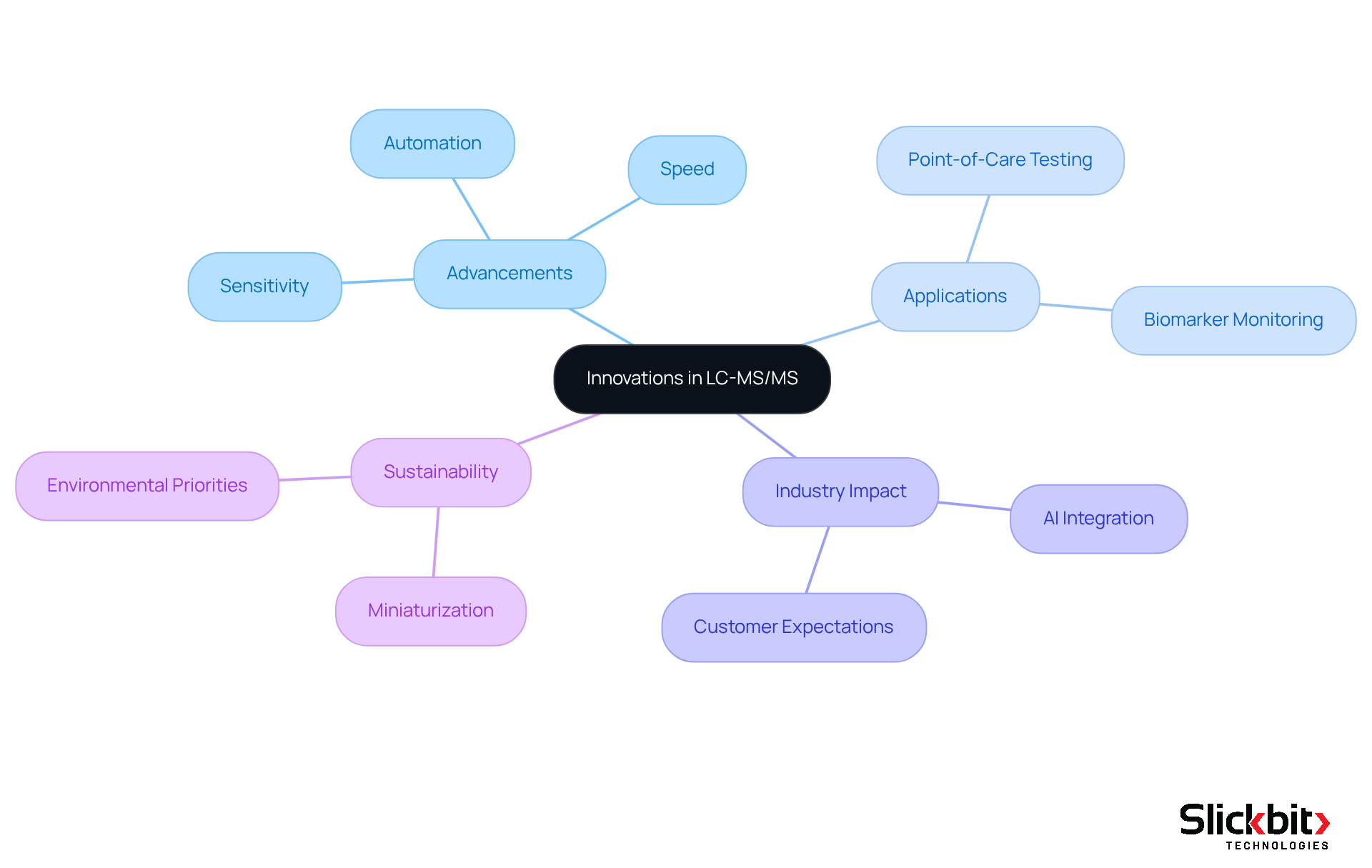
Conclusion
The applications of LC-MS/MS analysis in life sciences are vast and transformative, showcasing its critical role in enhancing research and diagnostics across multiple domains. This advanced technique not only streamlines workflows but also elevates the accuracy and reliability of results, making it an indispensable tool for professionals in pharmaceuticals, clinical diagnostics, environmental monitoring, food safety, and beyond.
Key insights from the article highlight the significance of LC-MS/MS in pharmacokinetic studies, where it enables precise drug behavior analysis, alongside its growing importance in clinical diagnostics for accurate biomarker measurement. Furthermore, the method's capabilities extend to environmental assessments, ensuring public health safety by detecting contaminants, and food safety, where it plays a vital role in identifying harmful substances. Innovations in LC-MS/MS technology, including the integration of AI and miniaturized systems, promise to further enhance its applications, driving efficiency and effectiveness in life sciences research.
As the landscape of life sciences continues to evolve, embracing advancements in LC-MS/MS analysis will be crucial for researchers and practitioners alike. The ongoing integration of cutting-edge technologies not only facilitates deeper insights into biological processes but also supports the development of safer and more effective therapeutic solutions. Engaging with these innovations will empower stakeholders to address complex challenges and improve outcomes in health, safety, and environmental stewardship, ultimately reinforcing the essential role of LC-MS/MS in advancing scientific knowledge and application.
Frequently Asked Questions
What is Slickbit and how does it enhance LC-MS/MS workflows?
Slickbit.ai provides custom AI solutions that enhance workflows for Life Sciences organizations by integrating AI agents into existing systems. This integration improves data evaluation, streamlines operations, and ensures regulatory compliance, ultimately accelerating the drug development process and enhancing analytical precision.
What specific tasks can AI optimize in LC-MS/MS workflows?
AI can optimize essential tasks such as data validation and reporting, allowing scientists to focus on critical evaluation and informed decision-making.
How quickly can Slickbit's AI solutions be deployed?
Slickbit offers rapid MVP development capabilities, ensuring that AI solutions can be deployed swiftly, providing immediate advantages to organizations in the Life Sciences sector.
What role does mass spectrometry play in pharmacokinetic studies?
Mass spectrometry is essential in pharmacokinetic research as it enables accurate assessment of compound levels in biological samples over time, providing high sensitivity and specificity for evaluating a drug's behavior within the body.
What pharmacokinetic parameters can be derived from LC-MS/MS analysis?
Researchers can derive crucial pharmacokinetic parameters such as half-life, peak plasma concentration, and bioavailability by analyzing plasma, urine, or tissue samples.
How has mass spectrometry been used in recent pharmacokinetic studies?
Recent studies have utilized mass spectrometry to assess the pharmacokinetics of innovative therapeutics, yielding vital data for dosing regimens and safety evaluations, such as the pharmacokinetic profile of tomivosertib.
What advancements are being made in pharmacokinetics research?
Current trends include leveraging LC-MS/MS analysis techniques and integrating artificial intelligence and machine learning to enhance data analysis and interpretation, improving the handling of complex datasets.
How does LC-MS/MS analysis improve clinical diagnostics?
LC-MS/MS analysis enhances clinical diagnostics by providing precision and reliability in measuring biomarkers, hormones, and drugs in biological fluids, aiding healthcare providers in making informed decisions regarding patient care.
What are some specific applications of LC-MS/MS in clinical diagnostics?
LC-MS/MS is crucial for identifying and measuring steroid hormones, which are important for diagnosing endocrine disorders, and it can analyze multiple compounds simultaneously, streamlining laboratory workflows.
Why is LC-MS/MS preferred over traditional chromatography methods?
LC-MS/MS offers higher specificity and sensitivity compared to traditional methods like gas chromatography (GC) and high-performance liquid chromatography (HPLC), making it a robust and economical solution for clinical laboratories.




